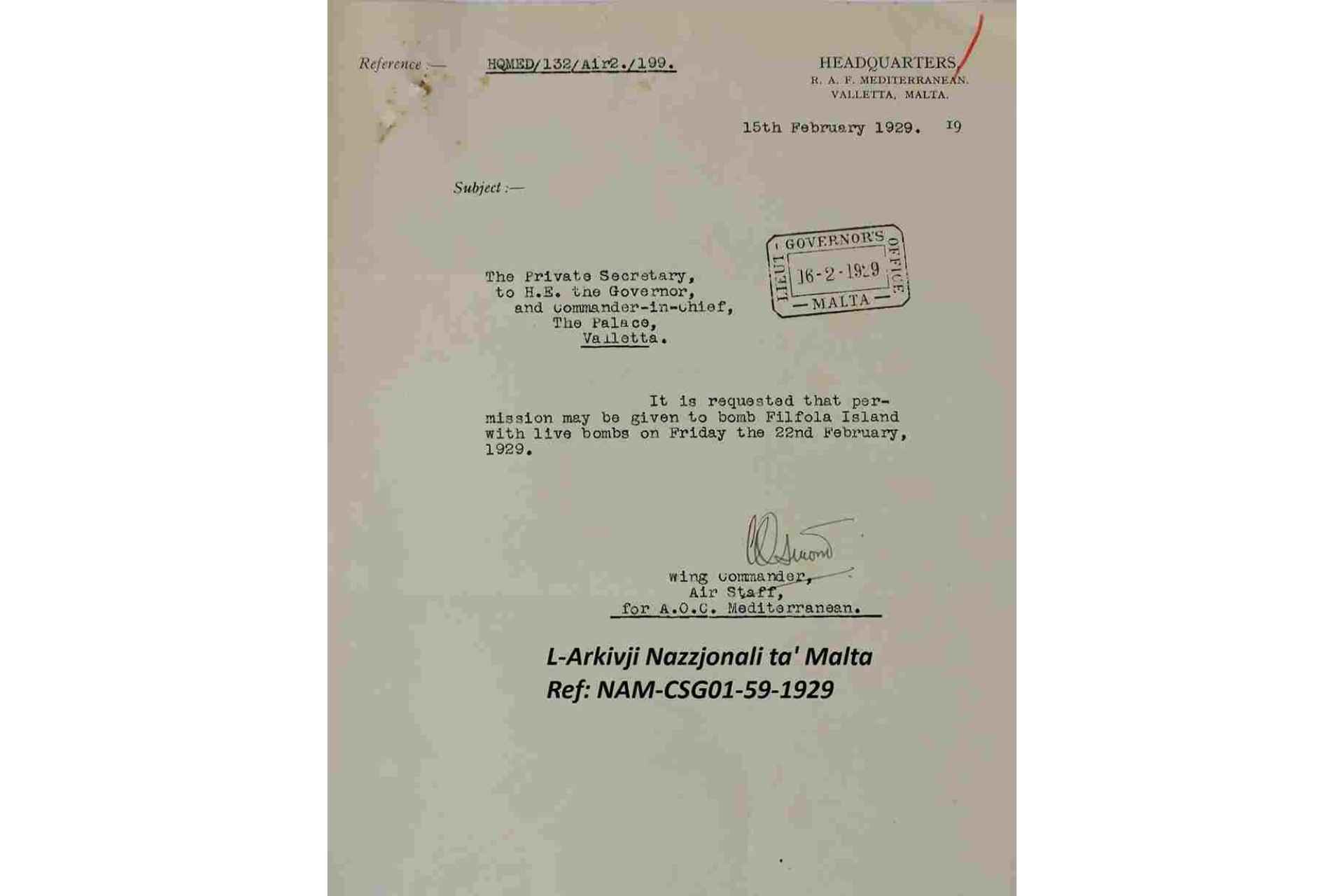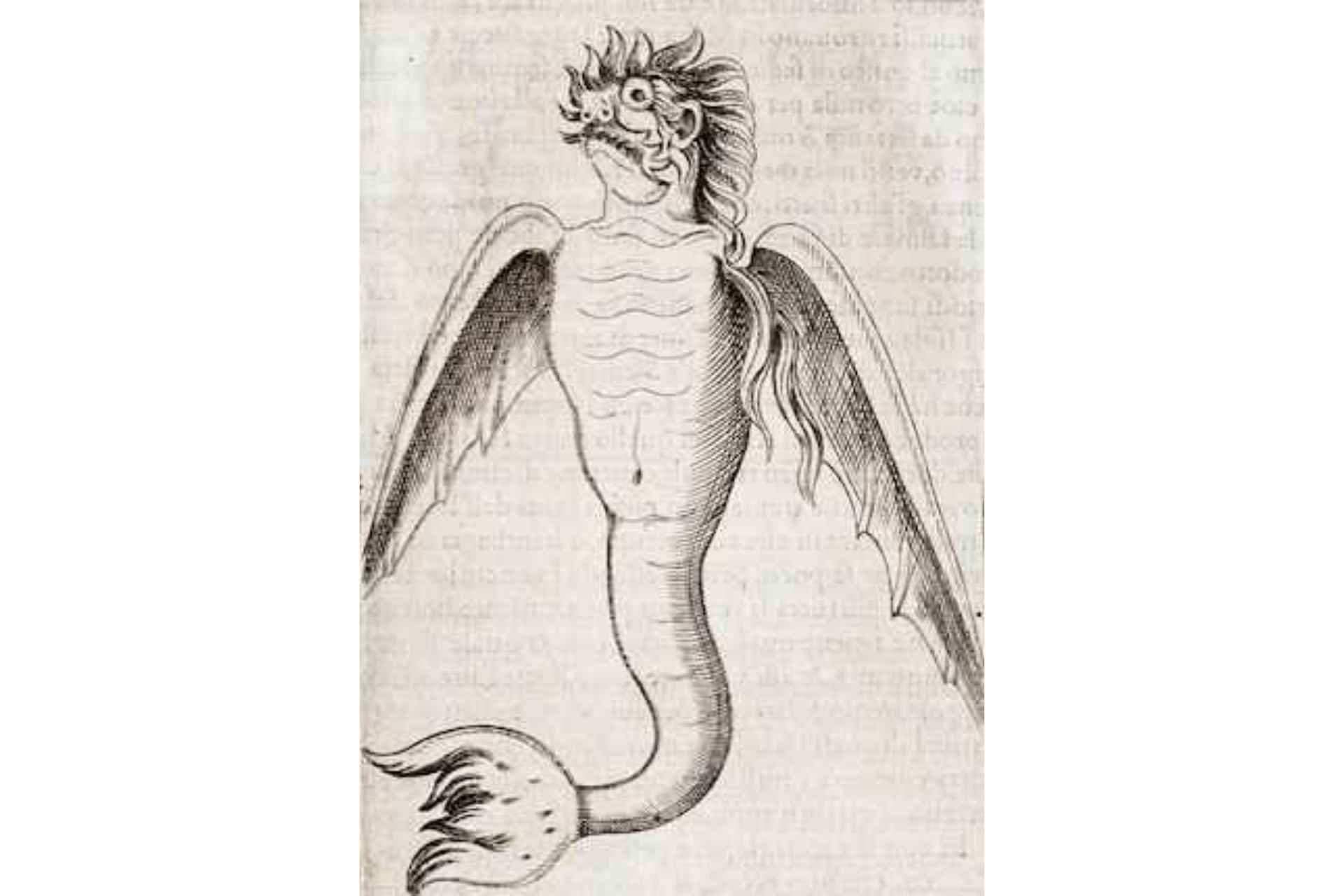Filfla: From Giant Sharks To Unexploded War Bombs And Long-Lost Chapels
by Chiara Micallef

Mysterious, captivating and around the size of two football pitches, Filfla is situated 4.5 kilometres off Malta's coast. This iconic islet is visible from multiple vantage points across Malta and Gozo – Blue Grotto, Gebel Ciantar, Ghar Lapsi, Wied iz-Zurrieq, Ghar Hasan, Dingli Cliffs and Il-Wardija ta' San Gorg. This enigmatic rocky islet was once far bigger than what we're familiar with today – almost as rich in size as it is in history.
A Pepper-Shaped Land
Oral and pictorial evidence both suggest that the island was originally shaped like a chilli pepper, hence its name. In numerous historical maps, Filfla is labelled Piper – a Latinised version of filfel, Arabic for chilli pepper. Some theories also suggest that chilli peppers were cultivated on the island, however, there was never any evidence of this, which is why the chilli-shaped island approach is better favoured.
Moreover, this indicates that Filfla's name is of Semitic origin, indicating that the island was assumably named during the Arab Rule of Malta.
Filfla's Bewildering Inhabitants
Filfla's otherworldly seas are lacking in human interference, unlike Malta's waters – They're also well-endowed with caverns and crannies, which are home to various species. The island's aquatic nooks offer shelter to morays, lobsters and other sea creatures.
Over the years, Filfla's land, thanks to its many crevices and screes, became a natural bird sanctuary, attracting a myriad of colonies, including the European storm petrel (Kangu ta' Filfla), Cory's shearwater and the yellow-legged gull. Thanks to these birds, the island was granted the Important Bird Area (IBA) status by BirdLife International.
Filfla is also home to two endemic species – the Filfola lizard (Podarcis Filfolensis Filfolensis) and the Maltese door snail (Lampedusa imitatrix). The Filflola lizard, contrary to popular belief, comes with neither two heads nor a double tail. It's a large greenish lizard with blue spots – not to be confused with the Filfla lizard (Podarcis Filfolensis Maltensis), a local subspecies found on all Maltese islands.

Since Filfla is a predominantly barren limestone plateau encompassed by unforgiving ridges offering little to no refuge, few plants manage to thrive on it. However, among these few, is a type of wild leek which can grow up to 2 metres tall.
It is interesting to note that Bronze Age (2400 BC to 800 BC) cart ruts were said to have existed on Filfla, discovered by the Jesuit archaeologist and ethnographer Fr Emmanuel Magri (1851 to 1907).
Notable historian and archaeologist Sir Temi Zammit discovered pottery fragments from the Temple Period (c. 4100 BC to 2500 BC) on the island, while Farrugia Randon, in his 2006 publication titled Comino, Filfla And St. Paul's Island stated that pottery jars and animal bones were found on Filfla. Despite this, it was never established whether humans inhabited or visited the island.
Man-Made Structures
While during the last quarter of the 19th century Filfla was considered unworthy land only fit to be utilised as a target for relentless blitzes by the British colonisers, Malta's Neolithic settlers may have considered it sacrosanct. Local historians speculate that Filfla's location influenced the construction of the stone temples located within 500 metres – Hagar Qim and Mnajdra.
Documented man-made structures on Filfla include a chapel dedicated to Stella Maris. This grotto chapel was constructed in 1343 by fishermen who sought shelter from unforgiving storms on the island. The titular painting was thankfully moved to St Catherine's Church in Zurrieq by Inquisitor Pietro Dusina. This priceless altarpiece can still be viewed nowadays in Zurrieq's parish church, showing the Virgin Mary and Saints Peter and Leonard.
Sadly, this troglodyte chapel and parts of Filfla were destroyed in 1856 by an earthquake.
An extremely rare and previously unknown map of the Maltese islands dating back to 1798 depicts a fortress, a lighthouse and a monastery built on Filfla some 200 years ago. This map, discovered by Michael Ritter, a cartography-focused German Scholar, is the only one known to exist in the world, and it can be viewed at Munich's Bavarian State Library.
Stranded On A Deserted Island
Vincenzo Gonzi, a prominent 19th-century ex-voto artist, was commissioned to paint a portrait dedicated to the Virgin Mary for saving the lives of Giuseppe Farrugia and Pietro Formosa.
The two were stranded on Filfla for a week on the 24th of February 1831 without food and water. Formosa and Farrugia were rescued from the clutches of certain death by a search party. The ex-voto painting can still be admired at the Qrendi Parish Church today.
The British And Filfla
The British left many mementoes on the Maltese islands, one of them being what is generally described as a bomb graveyard on Filfla.
The isle was used for target practice from the 1800s onwards by the Royal Air Force and the Royal Navy – transforming the island into the flat-topped limestone plateau it is today.
This horrifying exercise ceased in 1971, however irreversible damage was done, causing displacements to the soft rocky structure. Much of the island became disjointed, and the majority of Filfla became nothing more than rubble. An article published in the Times of Malta on the 10th of May 1952 speaks of a brickbat match between Italian and British battleships, which had to aim at and damage Filfla.

While ravaged beyond recognition, Filfa's picturesque magnificence still drew attention from locals and sightseers alike – including the British themselves. Sir Walter Norris Congreve, the British Governor of Malta, requested to be buried at sea near the island, thus giving the stretch of water between Filfla and Qrendi the name Congreve Channel.
A Connection To Maqluba
According to one local myth, Filfla's origins are linked to the Maqluba crater in Qrendi. Legend states that the Maqluba area was inhabited by lewd folk who were constantly cautioned by their pious neighbour to change their immoral ways of life. God eventually decided that the fiendish villagers needed to be punished, so he doomed the hamlet, sparing only the righteous neighbour and the chapel of St Matthew. An army of angels waged war on the town through a vicious storm so great that it created a sinkhole where the town once stood. Part of the sinkhole was uprooted and carried off to the middle of the sea, thus creating Filfla.
Mythical Sea Creatures
Tales from the late 1500s speak of is-silfjun, a whale-sized monster that preyed on unsuspecting fishermen and swimmers. Is-silfjun made its home in Filfla's waters, and it was a familiar feature in old cartographic maps of the Maltese islands from the 16th century onwards, with most of these maps depicting the silfjun close to Filfla.

Writings by Giovanni Francesco Abela in his 1642 publication Della Descrittione di Malta, Isola nel Mare Siciliano con le sue Antichita ed Altre Notitie, describe the silfjun as a fearsome aquatic beast with two massive fins, a single tail and double rows of teeth. In his forenamed book, Abela notes that a silfjun washed ashore in Mellieha after a particularly powerful storm.
Another book from the era that speaks of the Silfjun's existence was penned by Athanasius Kircher, a German Jesuit Scholar and polymath who visited Malta in the 16th century. Kircher wrote that a hideous demon washed up in Mellieha, making the scholar question why nature would allow such a monstrous creature to exist.
Although Malta is no stranger to mythical beasts and magical creatures, is-silfjun is believed to have been a great white shark. Megalodon teeth discovered in the area and near Filfla confirm the possibility of this, along with numerous sightings of great white sharks over the years.
People still believed in the existence of the silfjun until the end of the 19th century, when in 1890 it was reported that two fishermen, a father and son, were swallowed by a silfjun in Marsaskala. This incident was witnessed by a group of local fishermen who identified the beast as a silfjun.
Archaeological discoveries around the Maltese archipelago reveal why the silfjun survived for so long in Maltese lore and imagination. Megalodon teeth were uncovered over the years around Filfla, some of which are exhibited at the Natural History Museum in Mdina. Megalodon and shark teeth embedded in rocks were known as Lsien San Pawl and were believed to hold magical properties.
Filfla is known as a breeding ground for sharks, with one of the most spectacular captures being that of a 7.2-metre great white shark taking place just off Wied iz-Zurrieq in 1987.
Repurposed Bombs
Unexploded bombs at sea fired during the British army's target practices were never retrieved, unlike land-based target practices. This meant that the island's waters were home to hundreds of undetonated shells which missed their mark – allowing adventurous individuals to retrieve them. It is said that between the 1950s and 1980s, local fishermen would travel to Filfla to recover any undetonated bombs from the target practice drills found in shallow waters.
Jimmy Grima, a multi-disciplinary artist and researcher, uncovered a passage from a 1955 article in the Times of Malta when conducting research for his internationally-acclaimed performance, Kaxxa Infernali: Explosions and accompanying essay, Explosive (hi)stories:
"I only found one small excerpt, a reportage in the Times of Malta on October 5, 1955, titled "Illegal Possession of TNT": one resident was "charged with having been in possession of 27 lbs. of T.N.T. powder and ten drums of fuses and detonators, without a Police permit or a permit from a competent authority… He stated that some persons were landing on Filfla and salvaged unexploded bombs after target shooting practices by the British Army. These bombs were dismantled and the powder was sold to the quarrymen… Gauci told Police Sergeant Pace of the C.I.D. that he had bought the T.N.T. from a fisherman some three months before and had paid £60 for it."
Unexploded bombs were sold to firework-makers, who discovered ways to reclaim these weapons of demolition into a form of amusement and splendour. While this resulted in phenomenal artistic marvels, at times it also resulted in tragic explosions. To this day, fishing within one nautical mile of Filfla is forbidden to prevent fishermen from accidentally netting explosives.
Post-colonial diplomatic affairs involving Filfla often concentrated on the removal of these unexploded bombs, as different Maltese administrations over the years asked the British to clear the undetonated military shells.
Modern Times
In 1980, Filfla served as the location of the fictional Scab Island in the movie Popeye.
The island was given the status of a bird reserve in 1980, and later on, in 1988 the Filfla Natural Reserve Act was enacted, further restricting access and use of the island. This Act was amended through the Maltese Government notice 173 of 1990 to permit fishing within a one-mile zone of the island.
Filfla became a key player in an oil exploration dispute between Malta and Libya, which was submitted to the International Court of Justice in 1983.
Libya claimed the median line between the two countries should be based on the principle of natural prolongation, while Malta maintained that Fifla should be considered as part of its territorial confinement – which would have made the median line far closer to Libya than it is today. This was solved through a Special Agreement between the two countries.
Looking for more articles? Check out Yellow's Culture section to learn more



